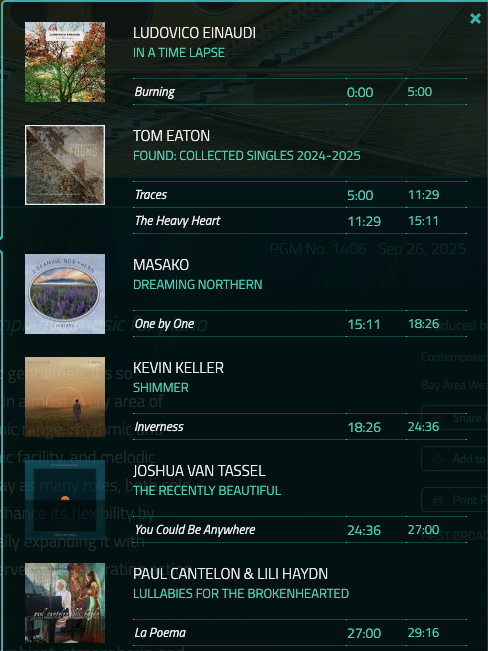
RECENT POSTS

February 13, 2024
July 2020: Max Crook And The Sound From Outer Space
There must have been a well-worn spot on the dashboard of my dad’s Ford Econoline.
In the late-1970s, my antique dealer father and I wandered the back roads of Southern New Hampshire looking for a desk or chair that he knew had value, or he knew he could sell for a profit, listening to all kinds of music from his formative years. The Beatles and Stones, the Big Bopper and Buddy Holly, Simon and Garfunkel (“A Picasso or a Garfunkel” remains one of the best throwaway lines ever sung), and even Warren Zevon all popped in and out of the cassette deck as I learned to tap in time on the dash in front of the passenger seat. To this day, there are entire albums from that era that seem to me to be full of hits simply because we listened to them so many times.
In those days, my ears were leaning in for time and patterns and, for the most part, ignoring the colors and timbres of the instruments. Neither of my parents played an instrument, and my ability to tell a guitar from a glockenspiel was pretty limited. Instead, I was immersed in the feeling of the time passing—the way forward momentum was generated as songs moved from verses to choruses and back again. It would be some time before I would know that bridges were not just things that got the van across moving water.
At least one of the tapes we listened to was a “Golden Oldies” collection, or perhaps a cassette made from one of the many “Golden Oldies” LPs we had at home (I still have a bunch of them). These collections introduced me to the Coasters, the Tokens, the Kingsmen, and solo artists like Leslie Gore, Little Eva, and Del Shannon.
Charles Westover had taken on the name Del Shannon before “Runaway” raced up the charts to number one in April of 1961, and Del seemed poised for continued success. It didn’t exactly happen that way, as he never had another number one song, and he more or less faded away inside the machine of the music industry despite working with luminaries such as Tom Petty and Jeff Lynne, and even producing an album for a young Bob Seger (thanks, Wikipedia, for that one!). He drank, got depressed, and eventually committed suicide. As Vonnegut would say, so it goes.
Del had a great voice, with that falsetto that no one seems to use anymore and gravel and grit when he wanted it, and he was particularly good at playing and singing the role of “the boy left behind.” But “Runaway,” dark and lonely, stood out to my young ears for one singular reason. In the middle of the song, out of nowhere, came a sound from outer space. It was a sound my ears couldn’t categorize, couldn’t really understand, and couldn’t get enough of.
Max Crook was the mastermind behind that sound. It was played on a Clavioline electronic musical instrument (an early synthesizer design) that he had modified into a singular machine he called the “Musitron.” Max co-wrote “Runaway” with Del and played that middle Musitron solo that lit my ears on fire. It’s almost an organ... but also obviously not one, and the way it dances and glisses with an almost voice-like vibrato was unlike anything I had ever heard. It was truly featured in the track, right up front, where so many other songs would have a sax solo or later an electric guitar. My kids would call it ‘flexing,” a kind of showing off, in both the sound and the playing of the sound, something you can do that no one else can... and in the case of “Runaway” it really was both something unheard of and something only Max could do.
Like Del, though, and so many in the music biz, Max’s momentary momentum was not a sign of things to come. He had a solo career and played here and there, but largely faded back into the world of “regular” folks. He became a firefighter and alarm installer while still making music in public sporadically. He was 83 when he died on July 1st.
I must have been about 8 years old when Max opened my ears to a world where sounds could be created beyond the bounds of traditional instruments, but strangely I only connected the dots last year when the solo to “Runaway” popped into my head randomly. I knew it note for note, though I hadn’t heard it in decades. A little interweb research turned up the history and the person behind the sound and the playing, and Max’s passing made me realize yet again how influential that solo was. And lately, as I carve imaginary sonic landscapes out of my synthesizers, I can’t help but think back to my dad’s van and the beauty and mystery of Max’s creation.
It was a sound from outer space that opened a door I didn’t even know was there.







